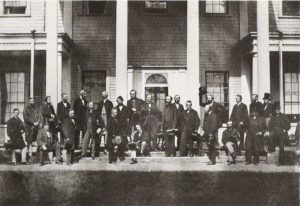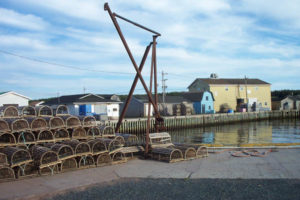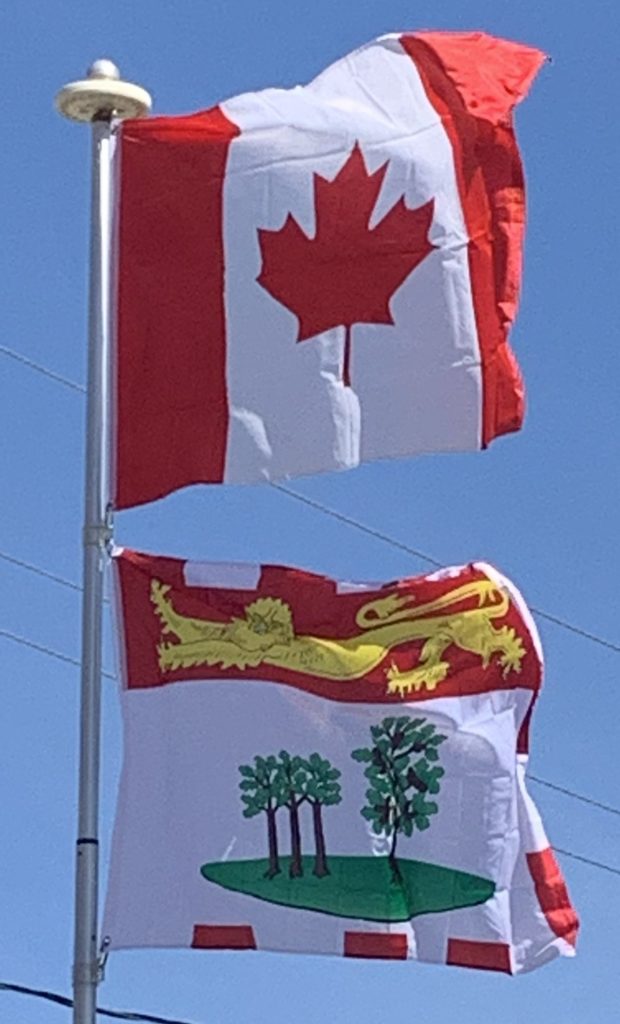
As a result of having hosted the inaugural meeting of Confederation, the Charlottetown Conference, Prince Edward Island presents itself as the “Birthplace of Confederation” and this is commemorated through several buildings, a ferry vessel, and the Confederation Bridge (constructed 1993 to 1997). The most prominent building in the province honoring this event is the Confederation Centre of the Arts, presented as a gift to Prince Edward Islanders by the 10 provincial governments and the Federal Government upon the centenary of the Charlottetown Conference, where it stands in Charlottetown as a national monument to the “Fathers of Confederation“. The Centre is one of the 22 National Historic Sites of Canada located in Prince Edward Island.
Economy:
The provincial economy is dominated by the seasonal industries of agriculture, tourism, and the fishery. The province is limited in terms of heavy industry and manufacturing, though Cavendish Farms runs extensive food manufacturing operations on PEI.

Agriculture remains the dominant industry in the provincial economy, as it has since colonial times. The Island has a total land area of 1.4 million acres with approximately 594,000 acres cleared for agricultural use. In 2006, the Census of Agriculture counted 1700 farms on the Island. During the 20th century, potatoes replaced mixed farming as the leading cash crop, accounting for one-third of provincial farm income. The number of acres under potato production in 2010 was 88,000, while soy accounted for 55,000. There are approximately 330 potato growers on PEI, with the grand majority of these being family farms, often with multiple generations working together. The province currently accounts for a third of Canada’s total potato production, producing approximately 1.3 billion kilograms annually. Comparatively, the state of Idaho produces approximately 6.2 billion kilograms annually, with a population approximately 9.5 times greater. The province is a major producer of seed potatoes, exporting to more than twenty countries around the world. The processing of frozen fried potatoes, green vegetables, and berries is a leading business activity.

Many of the province’s coastal communities rely upon shellfish harvesting, particularly lobster fishing as well as oyster fishing and mussel farming.
The island’s economy has grown significantly over the last decade in key areas of innovation. Aerospace, bio-science, information and communications technology, and renewable energy have been a focus for growth and diversification. Aerospace alone now accounts for over 25% of the province’s international exports and is the island’s fourth largest industry at $355 million in annual sales. The bio-science industry employs over 1,300 people and generates over $150 million in sales.
Transportation:
Prince Edward Island’s transportation network has traditionally revolved around its seaports of Charlottetown, Summerside, Borden, Georgetown, and Souris —linked to its railway system, and the two main airports in Charlottetown and Summerside, for communication with mainland North America. The railway system was abandoned by CN in 1989 in favor of an agreement with the federal government to improve major highways.
Until May 1997, the province was linked by two passenger-vehicle ferry services to the mainland: one, provided by Marine Atlantic, operated year-round between Borden and Cape Tormentine, New Brunswick; the other, provided by Northumberland Ferries Limited, operates seasonally between Wood Islands and Caribou, Nova Scotia. A third ferry service provided by CTMA operates all year round with seasonal times between Souris and Cap-aux-Meules, Quebec, in the Magdalen Islands. In May 1997, the Confederation Bridge opened, connecting Borden-Carleton to Cape Jourimain, New Brunswick. The world’s longest bridge over ice-covered waters, it replaced the Marine Atlantic ferry service. Since then, the Confederation Bridge’s assured transportation link to the mainland has altered the province’s tourism and agricultural and fisheries export economies.
